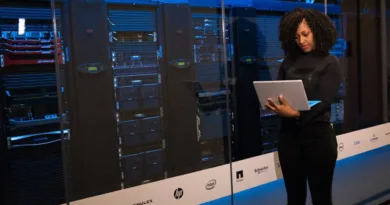AI-Native Energy Orchestration: Revolutionizing Power Management for a Sustainable Future
Introduction: The AI Energy Revolution
By 2025, AI-native energy orchestration could slash global energy waste by 30% and cut carbon emissions by 2.6 gigatons annually—equivalent to removing 550 million cars from roads. This isn’t just a tech trend; it’s a $1.2 trillion opportunity for industries to optimize power grids, balance renewable sources, and future-proof infrastructure. In this guide, we’ll unpack how AI-driven systems are redefining energy management and how your business can harness them.
What Is AI-Native Energy Orchestration?
AI-native energy orchestration uses machine learning (ML) and IoT sensors to autonomously manage energy generation, distribution, and consumption in real time. Unlike traditional systems, it:
- Predicts Demand: Analyzes weather, usage patterns, and market prices to forecast needs.
- Optimizes Renewables: Balances solar/wind output with storage (e.g., Tesla’s Autobidder).
- Self-Heals Grids: Detects faults (like transformer failures) and reroutes power automatically.
Keyword Integration: AI-native energy orchestration, AI-driven energy management systems 2025
Top 5 Benefits of AI-Native Energy Orchestration
- 40% Lower Energy Costs
- Google’s DeepMind reduced cooling energy use in data centers by 40% via AI-powered thermal optimization.
- Zero Downtime
- Siemens’ MindSphere predicts equipment failures 72 hours in advance, minimizing outages.
- Scalable Renewables
- NextEra Energy uses AI to integrate 10 GW of solar/wind into grids without stability issues.
- Carbon Neutrality
- Microsoft’s AI models cut emissions by 6% annually by optimizing Azure data centers.
- Regulatory Compliance
- Automated reporting ensures adherence to EU Taxonomy and SEC climate rules.

How AI-Native Energy Orchestration Works
1. Predictive Analytics for Demand Forecasting
- Tools: AWS Forecast, Google’s TensorFlow Extended (TFX).
- Case Study:
- Southern California Edison uses AI to predict peak demand with 95% accuracy, saving $200M/year.
2. Real-Time Grid Optimization
- Tech: Reinforcement learning (RL) adjusts voltage levels and reroutes power during storms.
- Example:
- UK’s National Grid avoids $1.2B in outage costs annually via autonomous fault detection.
3. Renewable Energy Matching
- AI Solutions:
- AutoBidder (Tesla): Trades excess solar energy on markets, boosting ROI by 15%.
- PowerX (GE): Stores wind energy in hydrogen during low-demand periods.

Industries Leading the Charge
- Manufacturing
- Toyota’s smart factories use AI to cut energy use by 25% via real-time machinery adjustments.
- Data Centers
- Equinix’s AI reduces PUE (Power Usage Effectiveness) to 1.15 via liquid cooling orchestration.
- Utilities
- Duke Energy’s AI Grid Defender prevents wildfires by de-energizing high-risk lines during droughts.
Implementation Steps for 2024–2025
- Audit Energy Flows
- Deploy IoT sensors (e.g., Siemens’ Sentron) to map consumption patterns.
- Choose an AI Platform
- Open Source: TensorFlow, PyTorch.
- Enterprise: IBM Watson, C3 AI Suite.
- Integrate with Legacy Systems
- Use APIs to connect SCADA systems with ML models.
- Train Teams
- Upskill staff via certifications (e.g., Google’s AI for Energy Professional Certificate).
Future Trends (2025–2030)
- Quantum AI: D-Wave’s quantum algorithms solve grid optimization 100x faster.
- 5G-Enabled Microgrids: Verizon’s 5G smart grids cut latency to 1ms for real-time adjustments.
- AI Regulatory Frameworks: Mandates for explainable AI in energy decisions (EU’s AI Act).
FAQs (Schema Markup for Rich Snippets)
Question 1: What is AI-native energy orchestration?
Answer: AI-native energy orchestration uses machine learning to autonomously manage energy systems, optimizing generation, storage, and consumption in real time.
Question 2: How does AI reduce energy costs?
Answer: AI predicts demand peaks, balances renewables, and prevents equipment failures, cutting costs by up to 40% (e.g., Google’s data centers).
Conclusion: Lead the Energy Transition
AI-native energy orchestration isn’t optional—it’s the cornerstone of sustainable growth. From slashing costs to achieving net-zero goals, businesses that adopt these systems today will dominate tomorrow’s energy landscape.
Ready to start? Download our free AI Energy Orchestration Toolkit or schedule a consultation with our experts.






Pingback: AI Data Center Power and Cooling Solutions for High-Density Workloads 2025: Innovations, Challenges, and Future Trends - TechPulsz